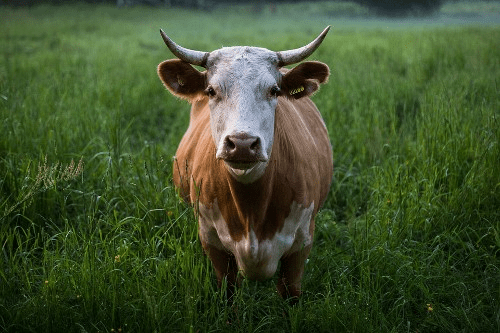Livestock manure is commonly used as a source of fertilizer or biogas for green energy applications, but this study, recently led by scientists from the Scottish Agricultural College (SRUC) in collaboration with the Universities of Bristol and Edinburgh, reviews recent research into the development of high-value manure-derived materials for ruminants, such as cattle.
They found that despite the diverse applications of recovered ruminant waste biomass (RWB), manure has been largely neglected.

The most common application is the use of manure in combination with other components to make composite materials such as plastic, recycled card and paper or concrete. However, it can also be used to extract nanocellulose, a prospective bio-based and biodegradable material for the future.
Currently, there is a trade-off between the performance of the material and the amount of processing required to achieve this goal, limiting the ability of RWBs to replace conventional materials at the commercial level.
Professor Fabrizio Scarpa of Bristol's Department of Aerospace Engineering explains, "In this study we looked at evaluating current manufacturing processes and properties of sustainable composite materials, where lignin-based reinforcements are mainly derived from ruminant waste.
"These composites can also be manufactured by using various types of recycled plastics as well as different categories of recycled natural fibers. This is very promising for future applications of sustainable materials in the extraction of nanocellulose from manure.
"From a mechanical point of view, nanocellulose is a bio-based material with very good properties. We found evidence that manure-derived reinforcements can also provide mechanical properties, such as similar existing composites made from reinforcements derived from non-waste sources.
"In the paper, we also describe some potential roadmaps to consider synthetic biology routes for making viable bio-based materials from manure and shifting the production of materials to a sustainable, circular local supply chain.
Given the demand for sustainable materials and the growing interest in nanocellulose research, it is likely that it will soon be taken out of the lab and into factories and everyday products," said Vijai Kumar Gupta, SRUC senior challenge researcher.
Ruminant waste biomass may contribute to the transition to large-scale and economically viable scale of nanocellulose production. Combined with other materials such as polymers, metals and ceramics, nanocellulose has great potential as an adsorbent in antimicrobial agents, antioxidants, sensors, electromagnetic shielding devices, water treatment, fuel cells, electrochromic and biomedical applications.

